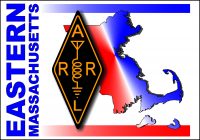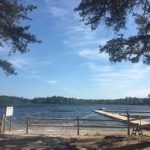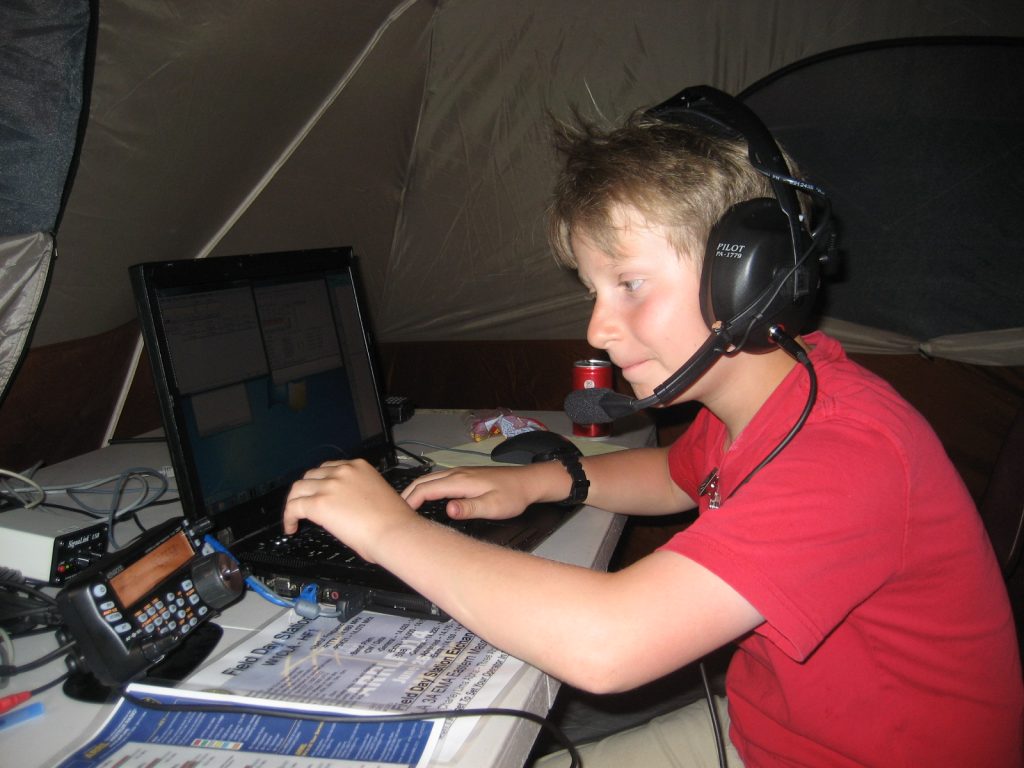
Contents
Contact
Jon McCombie, N1ILZ
75 Northwest St
Eastham, MA, 02642-2698
Tel: (508) 246-4982
Email: n1ilz@arrl.org
Introduction
Amateur Radio is a wonderful past time for youths. However, given the ever-increasing time demands society places on younger individuals, it’s not easy to capture their interest and attention–especially when youths look around at club meetings and field days and see themselves surrounded by an aging population of radio amateurs. Fortunately, innovative programs and activities have been developed to target youths nationally and locally.
STEM Activities for Youth
Many children become interested in electronics-related sciences at an early age, particularly with all the “gadgets” they have access to these days. Radio electronics can be enjoyed outside the classroom as a “hobby” that can last a lifetime. Helping children learn amateur radio basics at an early age can help instill a lasting positive attitude toward science and math and keep their interest in later years when peer pressure and competing activities sometimes displace their science interests. Many older generation radio operators often talk about getting their ham radio license around age 12 or 13 and enjoying the hobby on and off for many years. Some students applying for college have mentioned amateur radio on their applications as a way to set themselves apart from the average students. For those students interested in studying engineering, computer science, or communications, amateur radio is a valuable asset. Amateur Radio is a blend of science, technology, engineering, and math, the basis of a true “STEM” subject. [Sci Tech ARS website]
ARRL Youth Programs
Kids Day
Date(s): January 1, 2021; June 17, 2022
Twice a year, ARRL offers an event known as Kids Day designed to promote Amateur Radio to our youth. Share the excitement with your kids or grandkids, a Scout troop, a church or the general public. Kids Day is designed to give on-the-air experience to young people and hopefully foster interest in getting a license of their own. It is also intended to give older hams a chance to share their station and love for Amateur Radio with their children. [ARRLWeb]
School Club Roundup
Date(s): February 14-18, 2022
Objective: To exchange QSO information with club stations that are part of an elementary, middle, high school or college. Non-school clubs and individuals are encouraged to participate. Sponsored by the ARRL, its Hudson Division Education Task Force and and the Long Island Mobile Amateur Radio Club (LIMARC) to foster contacts with and among school radio clubs.
Award certificates will be issued for the following US and DX categories:
Schools: Elementary, Middle/Intermediate/Junior High School, High School and College/University
Non-school Clubs
Individuals
See http://www.arrl.org/school-club-roundup for full details.
Jamboree On The Air
Dates: October 21-23, 2022
When Scouts want to meet young people from another country, they usually think of attending a World Jamboree. But few people realize that each year more than a million Scouts and Guides “get together” over the airwaves for the annual Jamboree-on-the-Air (JOTA).
JOTA is the largest Scouting event in the world. It is held annually the third full weekend in October. JOTA uses amateur radio to link Scouts and hams around the world, around the nation, and in your own community. This jamboree requires no travel, other than to a nearby amateur radio operator’s ham shack. Many times you can find the hams will come to you by setting up a station at your Scout camporee, at the park down the block, or perhaps at a ham shack already set up at your council’s camp. [scouting.org]
Scouts of any age can participate, from Cub Scouts to Boy Scouts and Venturers, including girls. Once at the ham radio station, the communication typically involves talking on a microphone and listening on the station speakers. However, many forms of specialized communication may also be taking place, such as video communication, digital communication (much like sending a message on your smartphone but transmitted by radio), or communication through a satellite relay or an earth-based relay (called a repeater). The exchanges include such information as name, location (called QTH in ham speak), Scout rank, age, and hobbies. The stations you’ll be communicating with can be across town, across the country, or even around the world! The World Scout Bureau reported that the 2016 JOTA had nearly 1.3 million Scout participants from more than 30,000 locations, and reached 156 countries. [ARRLWeb]
Thinking Day On The Air
Dates: February 20-21, 2022
TDOTA is an opportunity for the members of Girlguiding from the youngest Rainbow to the oldest Trefoil Guild member to talk to other members of the World Association of Girl Guides and Girl Scouts all over the world via Amateur Radio.
The 22nd February is Thinking Day because it was the birthday of Lord Robert Baden-Powell, the founder of the Scout and Guide movements, and his wife Olave, who was the first World Chief Guide.
On this day each year members of WAGGGS (World Association of Girl Guides and Girl Scouts) remember the founders of the movement and take part in various activities to think about their sisters throughout the world. [Guides On The Air]
Amateur Radio on the International Space Station (ARISS)
“What do thunderstorms look like from outer space?” “Do you ever get claustrophobic in the ISS?” “What did the Leonid meteor shower look like from the space station?” “Why did you want to become an astronaut?” “What is your diet like in space?” “Can we talk to you only when you are above us?”
Amateur Radio on the International Space Station (ARISS) inspires students, worldwide, to pursue interests and careers in science, technology, engineering and math through amateur radio communications opportunities with the International Space Station (ISS) on-orbit crew. Students learn about life on board the ISS and explore Earth from space through science and math activities. ARISS provides opportunities for the school community (students, teachers, families and community members) to become more aware of the substantial benefits of human spaceflight and the exploration and discovery that occur on spaceflight journeys. Students have the opportunity to learn about space technologies and the technologies involved with space communications through exploration of amateur radio. [ARISS.org]
Youth Activities in Eastern Massachusetts
Jamboree On The Air
Jamboree On The Air operations have been conducted by individuals and radio clubs. The following clubs have held, or plan to hold future events:
- Barnstable ARC
- BSA Camp Squanto
- New England Sci-Tech
- Falmouth ARC
- Taunton Area Communications Group
- Whitman ARC
Thinking Day On the Air
Dates: February 20-21, 2021
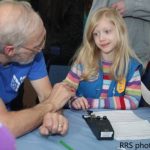
Since 2015 the Nashoba Valley Amateur Radio Club has participated in the Girl Scouts “Thinking Day On The Air” (TDOTA) sponsored by the World Association of Girl Scouts and Girl Guides. “Thinking Day is held annually in late February, on or near the birthday of Lord Robert Baden-Powell, the founder of the Scout and Guide movements, as well as that of his wife Olave, who was the first World Chief Guide. In 1909 Baden-Powell, faced with an increasing number of girls wishing to take part in Scouting, decided that girls should have their own separate movement. Thus the Girl Guides were founded.”
NVARC members held recent TDOTA operations in Northern Massachusetts and Southern New Hampshire. In 2017, they operated in two separate events: in Shirley, Massachusetts and Raymond, New Hampshire. In 2018 NVARC held a TDOTA event in Shirley. On February 16-17, 2019, they assisted Girl Scounts from Tyngsboro, Westford, and Raymond, New Hampshire in TDOTA.
The Nashoba Valley ARC encourages other radio clubs to become involved in this worthwhile endeavor. For more information on how your club can get started, visit http://n1nc.org/Events/2017/GSTDOTA/article.
ARISS in Eastern Massachusetts
Several ARISS events in the section have taken place in recent years.
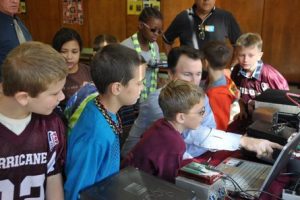
The Falmouth Amateur Radio Association assisted with an ARISS operation on October 26, 2012 at the East Falmouth Elementary School between the school children and astronaut Sunita Williams, KD5PLB operating NA1SS.
Students at the Kuss Middle School in Fall River made contact with NA1SS on September 16, 2005. “Matthew J. Kuss is an urban middle school located in Fall River, MA. The school has a population of six hundred sixth through eighth grade students. Seventy percent of the population is low income. The staff consists of 80 teachers and paraprofessionals. Kuss was named one of the fifty original NASA Explorer Schools in 2003. As part of the NASA Explorer School program, Kuss started an amateur radio club with the support of the Bristol County Repeater Association.”
In 2005, the Nashoba Valley Amateur Radio Club organized a successful ARISS event at the Hawthorne Brook Middle School in Townsend with astronaut William McArthur, KC5ACR.
Several area Cape Cod schools participated in an ARISS contact on January 18, 2003 at the Cape Cod National Seashore.
Youths at Peebles Elementary School in Buzzards Bay spoke to astronaut Susan Helms, KC7NHZ operating NA1SS on July 12, 2001.
New England Sci-Tech
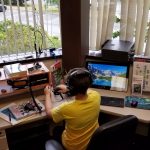 This Natick 501(c)(3) non-profit corporation promotes STEM+ education and hosts a high-tech Maker lab.
This Natick 501(c)(3) non-profit corporation promotes STEM+ education and hosts a high-tech Maker lab.
“We are a group of skilled and experienced teachers, engineers, artists, makers, inventors, licensed amateur radio operators, and FCC examiners providing educational programs to families, students, schools, scout groups, MRC/CERT teams, home schools, and other educational and public service groups.”
New England Sci-Tech is located at 16 Tech Circle, Natick MA 01760 Tel: 508-720-4179.
Youth Clubs
BSA Camp Squanto, W1CSQ
 BSA Camp Squanto is located at 200 Cutters Field Road in Plymouth, Massachusetts.
BSA Camp Squanto is located at 200 Cutters Field Road in Plymouth, Massachusetts.
The Camp holds a large number of BSA activities. During the summer, over 1400 scouts participate in one of eight week-long summer camp experiences. Summer Camp, Eagle Week and other year round activities exposes scouts and their leaders to an amateur radio experience. The radio merit badge is offered throughout the year. The club station, W1CSQ, is on the air for Field Day and Scouts on the Air.
The club welcomes donations to assist with the development and expansion of its club shack and ham radio educational programs. Its mailing address is:
BSA Camp Squanto
P.O. Box 931
South Carver, MA 02366
Boston University ARC, W1BUR
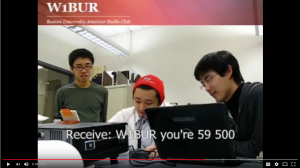 The Boston University Amateur Radio Club (BUARC) reactivated in 2011 and actively engages with the Boston University student community for public service and networking opportunities involving wireless communications.
The Boston University Amateur Radio Club (BUARC) reactivated in 2011 and actively engages with the Boston University student community for public service and networking opportunities involving wireless communications.
Membership does not require an amateur radio license, and FCC rules allow for “third party” operation of unlicensed individuals supervised by a licensed amateur radio operator. We can help guide you through getting your amateur radio license (monthly ham radio licensing exams are held at MIT).
W1BUR Antenna Farm
- Broadband HF dipole
- End fed 20m
- VHF/UHF vertical
- Cushcraft HF yagi (disassembled)
- rotor for HF yagi (very likely frozen as it hasn’t been used in many years)
W1BUR Equipment
Equipment is generally wired for Anderson Powerpole.
- Icom IC-756 (non-Pro)
- Ten Tec Omni VI+ (no transmit on 80m)
- Yaesu VHF/UHF mobile (CTCSS encode only)
- Kantronics KPC-9612+
- rotor controller
- 25 Amp power supply
- Ameritron AL-811 amplifier (wired for 120 Vac)
- Intel Core 2 Duo PC with latest Ubuntu Linux
- MFJ Antenna analyzer
- SWR meters
- iambic CW key
W1BUR is in the Photonics Building, in space generously provided by the ECE Department and specifically thanks to Professor Horenstein and ECE Department Chair W. C. Karl.
Explorer Club 73 at the Cape Cod Lighthouse Charter School, K1CLS
This program was disbanded.
Explorer Club 73 meets the first and third Tuesday of each month at the Cape Cod Lighthouse Charter School in Harwich from 3 PM to 4:30 PM. The intermediate school serves children in the 6th, 7th, and 8th grades. It is sponsored by the Barnstable Amateur Radio Club in connection with the Cape Cod and Islands Council and Explorer Program.
Explorer Club 73 features a club station with HF and VHF radios and a tri-band antenna along with a 2meter/440 antenna on the roof. They are active in the School Club Roundup. The students are taught about ham radio and encouraged to get their ham license. Students who receive their licenses receive a free handheld radio. The club conducts license classes during the school year and have graduated a number of students.
Harvard Wireless Club, W1AF
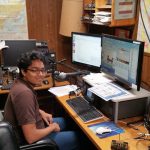
One of the oldest club stations in existence, the Harvard Wireless Club (HWC) was founded in 1909. Over the years, hundreds of alumni have operated its storied radio station. HWC participates in numerous contests and on-air events, like the ARRL DX contests (phone and CW weekends) as well as Sweepstakes.
The club is located at 6 Linden Street, in Cambridge. Meeting times and locations vary.
HWC features an impressive array of antennas, including a Cushcraft XM240 “Big Thunder” 2-element 40-meter beam, in addition to an M2 10-30LP8 8-element log periodic for 30 through 10 meters. A smaller tower features a Cushcraft A50-5S 5-element 6-meter beam and a Cushcraft x7 7-element on 20, 15, and 10 meters. The roof also contains an 80-meter inverted V dipole and a Cushcrxaft AR270B 2 m/70 cm vertical antenna. I
Radios include: Icom IC-756 Pro III (HF/6 meters) and Icom IC-821 (2 m/70 cm) transceivers; and an Icom IC-4KL 1 kw amplifier (160-10 meters).
Hudson High School ARC, W1HUD
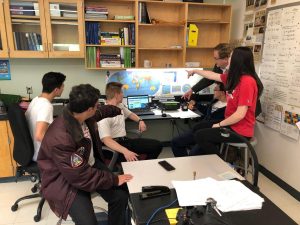 Founded in April of 2019, the Hudson High School Ham Radio Club went on the air with a new club station license as KC1LFV. Within a few weeks, the FCC issued our new club vanity callsign: W1HUD.
Founded in April of 2019, the Hudson High School Ham Radio Club went on the air with a new club station license as KC1LFV. Within a few weeks, the FCC issued our new club vanity callsign: W1HUD.
Hudson High School is a public school enrolling about 950 students in grades 8 – 12. It is located in the New England town of Hudson, MA, about 27 miles (43 km) west of Boston. We offer a broad general education curriculum, including about 155 elective courses to meet widely varying student interests. Included among these are courses in digital electronics, robotics, and an advanced AP Physics course in calculus-based electricity and magnetism.
Unlike in years past, most teens today have never even heard of amateur radio, let alone seen a ham station in operation. The HHS Ham Radio Club was formed to address this gap in knowledge, and hopefully to inspire young people to become interested in amateur radio.
The first “shack” for W1HUD is located right inside the Honors and AP Physics classroom/lab at the high school, where students can try their hand at listening and operating under the close supervision and operational control of the club’s founding trustee Reed Prior (W1TF), who is a physics and astronomy teacher at the school.
The club currently is using a borrowed Kenwood TS-590S transceiver feeding a donated 18 ft tall Hy-Gain 5-band vertical antenna mounted on the building roof. The roof is made of membrane coated steel, so it provides an excellent counterpoise.
Most operations since inception have been on FT-8 digital using WSJT-X software running on a loaned teacher’s laptop. Operating in digital mode has proved especially appealing to the students in our situation, since:
1) Digital operations are “quiet in the shack” (with the burbling tones turned down on the AF control), so students and the controlling operator can operate the station while other classes are running in the same room.
2) Young people these days are . . . well . . . shy about speaking live with strangers. They’ve grown up in an SMS texting world, where even dating is often done as much by texting each other as by interacting in person! They seem naturally fascinated by the power of digital communications sans the internet infrastructure.
3) With the club’s modest “Little Pistol” station of just 100 watts feeding an omnidirectional vertical antenna, students are amazed by the range of DX stations they can reach this way, even during the day. Strong signal reports from 10,000 miles away in Australia come to us on 40m and 30m almost every morning. [QRZ.com/db/w1hud]
MIT Radio Society, W1MX
Formerly 1XM, the MIT Radio Society (W1MX) is America’s oldest college amateur station. The MIT Radio Society is a student run organization intended for MIT students, faculty, and staff. New student members are greatly appreciated. The MIT Radio Society meets on the first Tuesday of each month at 7:30 PM on the third floor of Walker Memorial (50-358) in Cambridge.
The W1MX HF station is located on the third floor of Walker Memorial on the MIT campus in room 50-358. The station has two operating positions. The primary operating position consists of a Ten-Tec Orion and Ten-Tec Orion II, configured for SO2R operation. These radios are connected to Henry 2K4 and Acom 2000A linear amplifiers, respectively. The second operating position is a Yaesu FT-2000 and Ameritron AL-1200 linear amplifier.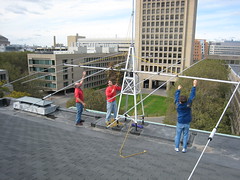
The antennas at W1MX consist of Mosley PRO-96 and TA-36 HF beams, as well as a full-size 160 meter dipole, suspended off the corner of the Green Building (building 54) at nearly 300’ AGL. As contest season comes and goes, the roof of Walker is constantly being rearranged with various receive loops and experimental HF antennas.
The antenna system is made complete through an array of antenna tuners (one per band) and a remote switching mechanism that allows for quick band changes with minimal retuning. Gracing the back corner of the 50-358 shack is the Collins S-Line console, which served W1MX into the 1980s, though it sees little operation today. Adjoining the station, in room 50-357, is a workshop with benches and some machine tools. It also has a massive collection of W1MX history, in the form of parts and old radios. [from w1mx.mit.edu]
Massachusetts Maritime Academy Radio Club, KC1IKY
July 17, 2018: the MMARC has qualified for ARRL Affiliated Club status. The club’s specialties are listed as: Contest, Digital Modes, DX, General Interest, Public Service/Emergency, School or Youth Group, and VHF/UHF. Services Offered include: Entry-Level License Classes, License Test Sessions, and Mentoring.
Northeastern Wireless Club, W1KBN
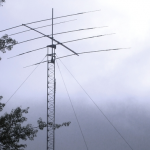
“The Northeastern Wireless Club is a team of individuals geared toward helping students learn more about electronics and pursue their interests in amateur radio. We help students learn more about electronics through actual circuit design and debugging. Students from all disciplines can meet to work on projects and learn electronics through hands-on application. The club features a members exclusive lab space and a full amateur radio station. The Wireless Club exists to foster a spirit of technological exploration with a primary emphasis on electronics and computer technology. Lab space and equipment allows students to tinker, experiment, build, and learn on their own in an unstructured way.” [courtesy Northeastern Wireless Club website]
The club meets Thursday evenings at 6 PM during the academic year in Hayden Hall, Room 503, 370 Huntington Avenue, in Boston, MA.
Olin Collegiate Amateur Radio Club, KC1LHR
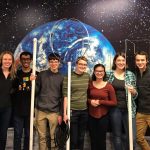
The radio club at Olin College in Needham, Massachusetts, was restarted in the fall semester of 2019 and is still in its development stages. It has approximately eight student members along with a few professors. Whitney Lohmeyer is their professor club sponsor. The radio club will also be working with Olin‘s Space Research Lab, and plans to share its ground station and eventually “be able to connect to small satellites as part of a project.”
Currently, members are building their own ground station and getting its student members licensed.
According to Olin Collegiate Amateur Radio Club Vice President Cameron “Cali” Wierabanowski, KC1KNQ: “I’m struggling to get antennas built, people licensed, and organize an event with Bob Phinney (K5TEC) at New England Sci-Tech.” She adds, “So far our affiliation with Sci-Tech and the Framingham Amateur Radio Association has worked well and I will be trying to connect with the Wellesley club soon.”
Sci-Tech Amateur Radio Society, W1STR
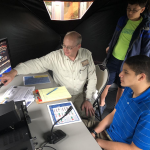 “The Sci-Tech Amateur Radio Society (STARS) is made up of students, parents, teachers, and supportive amateur radio operators from around greater Boston, the metro-west suburbs, and New England. There are active members who are FCC-licensed hams, provisional members who are working on their ham Technician licenses, and supporting members who lend help or expertise where needed. STARS is supported by New England Amateur Radio Inc (NEAR), a non-profit educational group based in Natick, MA.”
“The Sci-Tech Amateur Radio Society (STARS) is made up of students, parents, teachers, and supportive amateur radio operators from around greater Boston, the metro-west suburbs, and New England. There are active members who are FCC-licensed hams, provisional members who are working on their ham Technician licenses, and supporting members who lend help or expertise where needed. STARS is supported by New England Amateur Radio Inc (NEAR), a non-profit educational group based in Natick, MA.”
Section Youth Coordinator
The ARRL has created a new section level leadership position known as the Section Youth Coordinator. The SYC has been tasked with maintaining a current assessment of active youth amateur radio operators in the section, including those involved within clubs, Scouting and other youth organizations, and schools; promoting youth-related on-air activities including ARRL Kid’s Day, Jamboree on the Air (JOTA), Field Day, and School Club Roundup; and, providing youth related ideas and resources to amateur radio clubs and individuals within the section.
See Also
